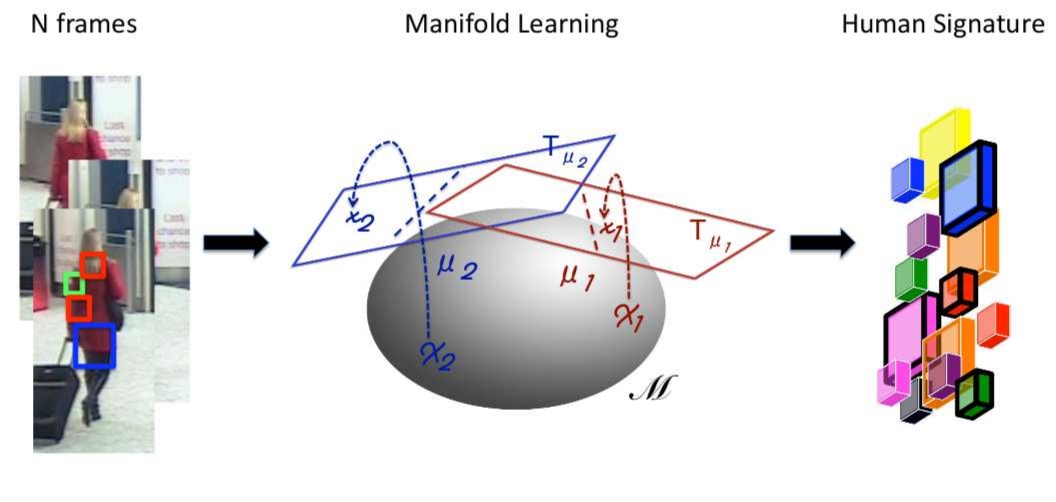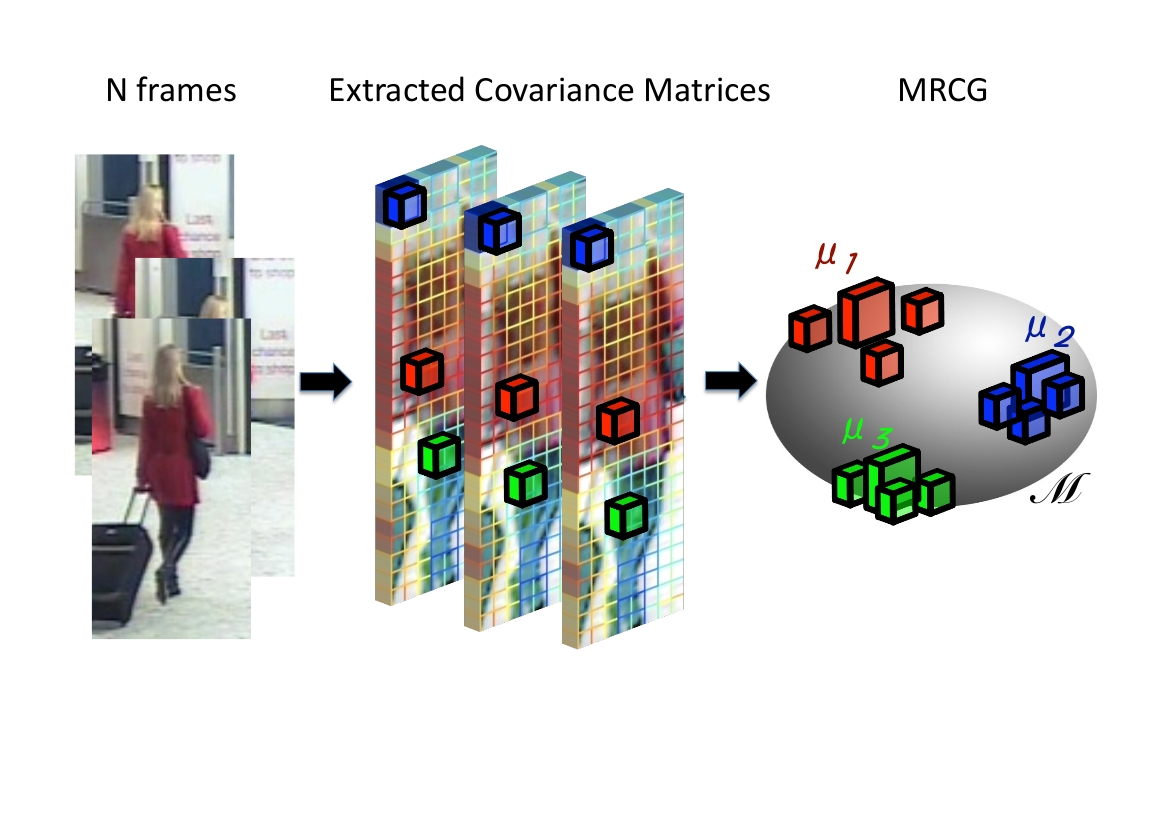Section: New Results
Human Re-identification using Riemannian Manifolds
Participants : Sławomir Bąk, Etienne Corvée, François Brémond, Monique Thonnat.
This work addresses the human re-identification problem, which is defined as a requirement to determine whether a given individual has already appeared over a network of cameras. This problem is particularly hard by significant appearance changes across different camera views. In order to re-identify people, a human signature should handle difference in illumination, pose and camera parameters.
We propose new appearance models based on the mean riemannian covariance (MRC) matrices combining the appearance information from multiple images. These mean covariance matrices not only keep information on feature distribution but also carry out essential cues about temporal changes of an appearance. Using MRC-s, we propose two methods for an appearance representation:
-
Learned Covariance Patches (LCP) [25] - a distinctive representation is extracted by a boosting scheme. The structure of MRC patches (size, position) is learned using boosting algorithm based on confidence-rated predictions (see Fig. 15 (a)). These confidence-rated coefficients are employed to weight appearance characteristics of a specific individual w.r.t. the reference (training) dataset of humans.
-
Mean Riemannian Covariance Grid (MRCG) [30] - less computationally demanding technique than LCP. We represent a human appearance by a grid of MRC cells (see Fig. 15 (b)). Relevant cells are identified by an efficient discriminant analysis. This analysis takes into account variance of MRC patch in the class of humans (reference dataset). MRC is assumed to be more significant when its variance is larger in the class of humans: (1) the most common patterns belong to the background (the variance is small); (2) the patterns which are far from the rest are at the same time the most discriminative (the variance is large). All operations, such as mean or variance, are performed on covariance manifold specified as Riemannian.
Both methods are evaluated and compared with the state of the art using publicly available datasets. We demonstrate that the proposed approaches outperform state of the art methods. Further, we extract new sets of individuals from i-LIDS data to investigate more carefully advantages of using many images for human re-identification.
The computation complexity is analyzed in the context of distance operator between two signatures. Comparing two human signatures, it is necessary to compute distance between covariance matrices, which requires solving the generalized eigenvalues problem. This operation is computationally heavy. In [31] , we propose an implementation for finding generalized eigenvalues and eigenvectors for distance operator, using NVIDIA GPU architecture. We improve significantly the performance, reaching 66 speedup using Tesla S1070.




